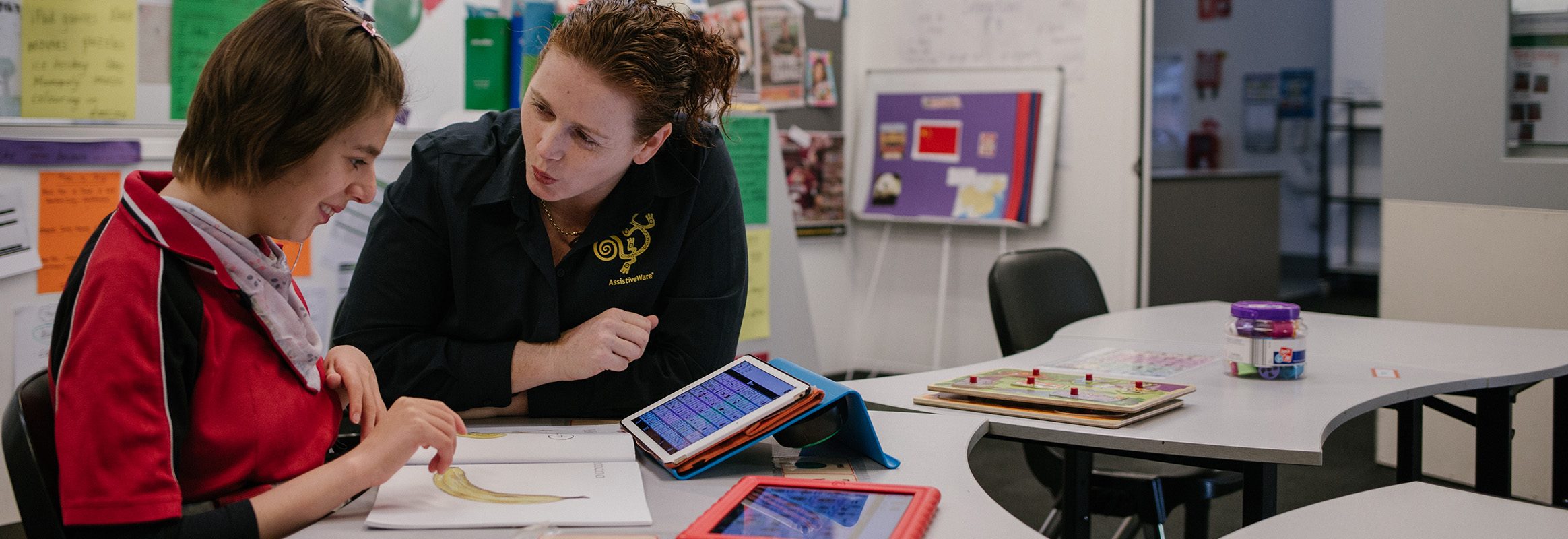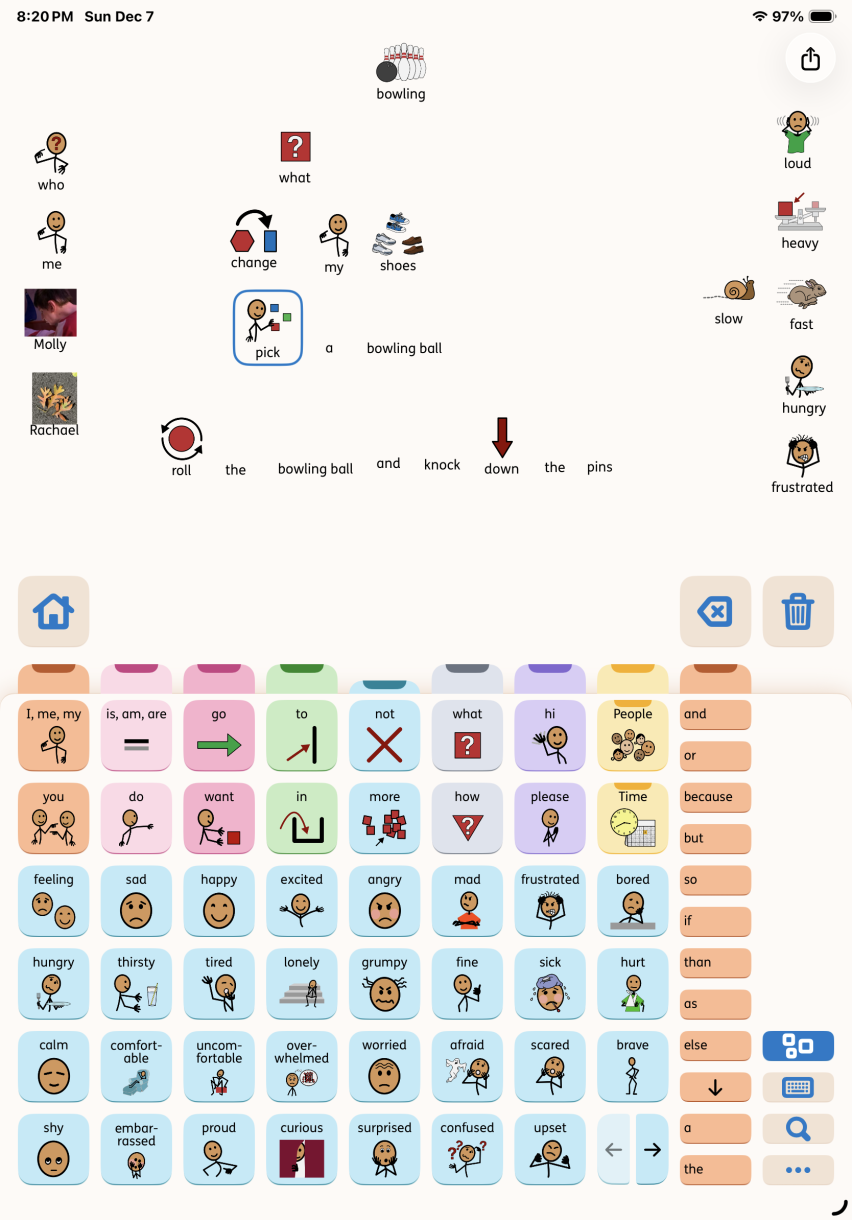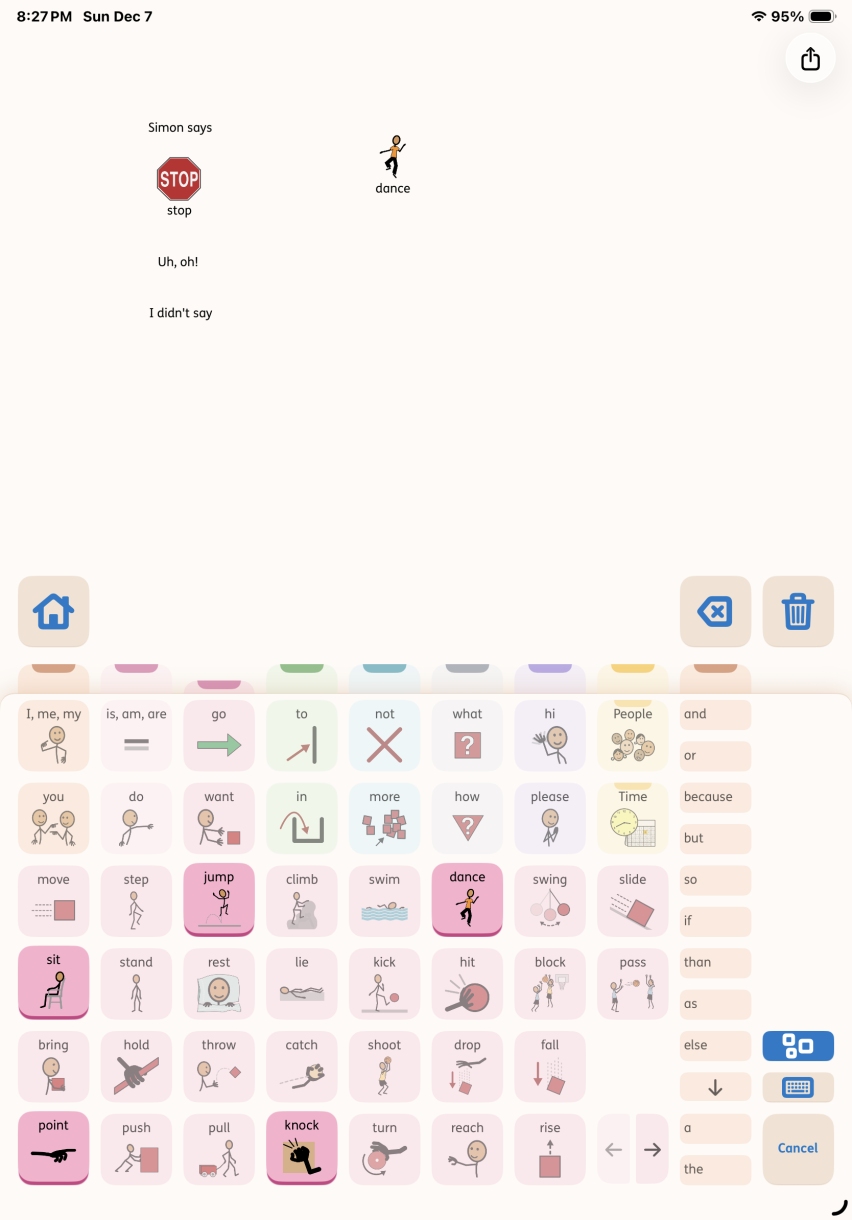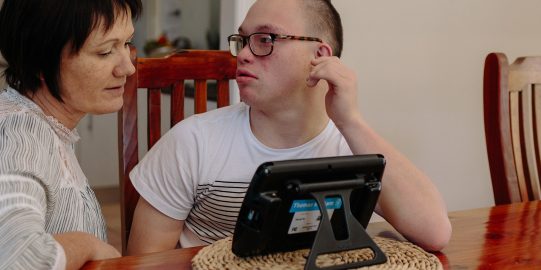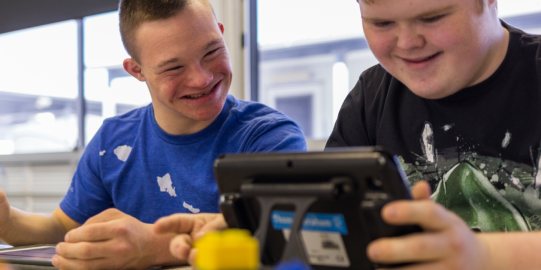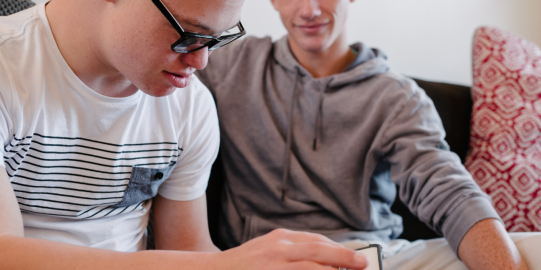Why “robust,” not "balanced"?
“Balanced” can sound like we’re trading one thing for another: a little of this, a little of that. But "robust" highlights capacity. It means a vocabulary that grows with the communicator. A robust vocabulary supports language development through grammar, storytelling, and self-expression.
The bottom line
This article offers an effective alternative to topic boards. AAC users can only say what is on the topic board. This limits their language and makes it difficult to build sentences. It also does not support long-term learning.
Continuous communication growth happens through learning and modeling with a robust vocabulary.
Proloquo’s design keeps all words within reach. Thinking Space and Focus Mode provide context and simplicity. They do this without losing language development. Using them together creates communication that is flexible and efficient.
Links & References
AssistiveWare Support Proloquo and Proloquo Coach help overview
– Proloquo Thinking Space
– Proloquo Focus Mode
Binger, C., Harrington, N., & Kent-Walsh, J. (2024). Applying a Developmental Model to Preliterate Aided Language Learning. American Journal of Speech-Language Pathology, 33, 33–50.
Erickson, K., & Koppenhaver, D. (2020). Comprehensive Literacy for All: Teaching Students with Significant Disabilities to Read and Write. Baltimore, MD: Paul H. Brookes Publishing.
Farrall, J. (2015, October). Aim for language development: Don’t create custom pages for specific activities.
Goossens, C., Crain, S., & Elder, P. (1992). Engineering the Preschool Environment for Interactive, Symbolic Communication. Solana Beach, CA: Mayer-Johnson.
Light, J., & McNaughton, D. (2014). Communicative competence for individuals who require augmentative and alternative communication: A new definition for a new era. Augmentative and Alternative Communication, 30, 1–18.
Light, J., & McNaughton, D. (2022). The Changing Face of AAC: Moving from Technology to People. Augmentative and Alternative Communication, 38, 1–13.
Zangari, C. (2013). From Activity-Based AAC to Robust Language (Parts 1 & 2). PrAACtical AAC Blog.
